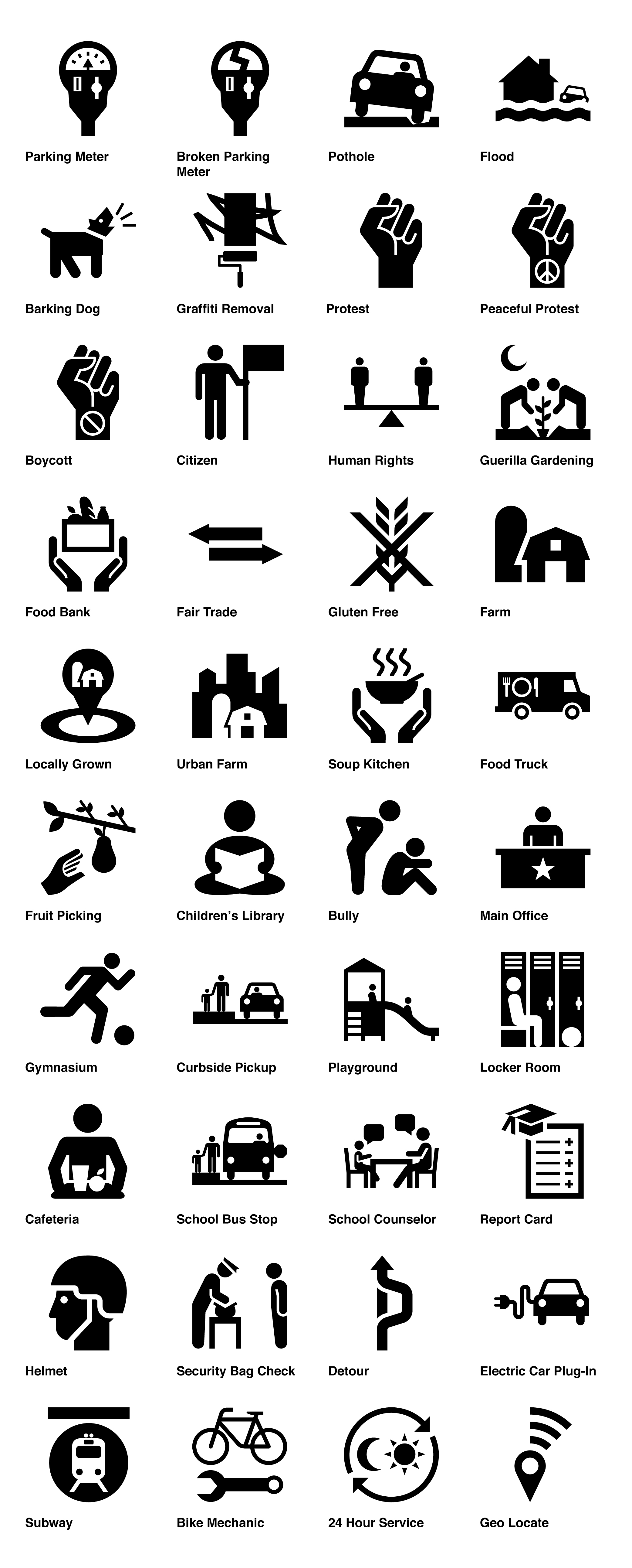The Noun Project and Code for America have partnered with the City of San Francisco Mayor’s Office of Civic Innovation to host an Iconathon on Saturday, June 30th. The design workshop will focus on creating a set of public domain symbols to visually communicate Neighborhood Revitalization. These symbols will cross language and illiteracy barriers to communicate things like community gardens, stores that sell healthy food, and places to see public art.
We are working with San Francisco’s Central Market/Tenderloin neighborhoods as the site to inspire ideas for symbols. This event is free and open to the public, anyone is welcome to participate – no design skills required! Space is limited, so please RSVP.
Image of Tenderloin by Jake Levitas
We’d love to get your input about what symbols you think should be created during this Iconathon. Please visit ImproveSF to see what symbols we’re considering, to submit your ideas and vote for your favorites.
Event Details
Date: Saturday, June 30th
Time: 10am to 3pm
Location: Code for America Headquarters at 155 9th Street, San Francisco, CA 94103
Theme: Neighborhood Revitalization
Speaker on “Central Market Area Revitalization”: Ellyn Parker from the Mayor’s Office of Economic Workforce and Development
Speaker on “Tactical Urbanism”: Dan Parham, co-founder of Neighborland
Speaker on “Symbol Design & User Comprehension”: Edward Boatman, co-founder and Creative Director of The Noun Project
Lunch: sponsored by Bars + Tone and faberNovel
Collaborators: Code for America, the Mayor’s Office of Civic Innovation and City & County of San Francisco
RSVP: Eventbrite
About San Francisco’s Central Market/Tenderloin Neighborhood
The Central Market neighborhood is a stretch of Market Street from 5th Street to Van Ness Avenue in the heart of San Francisco. Situated next to Tenderloin, the neighborhood has for decades suffered from blight and neglect. In 2010, San Francisco’s Office of Economic and Workforce Development launched the Central Market Partnership, a public/private initiative to renew and coordinate efforts to revitalize the Central Market neighborhood. The City’s goal is to restore Central Market as San Francisco’s downtown arts district by inviting in new retail, restaurants, services and employers, at the same time as ensuring against displacement.
The efforts to revitalize and transform the Central Market area have culminated in companies like Zendesk and Twitter paving the way forward by moving their headquarters to the area.
For more information visit www.centralmarketpartnership.org











